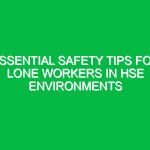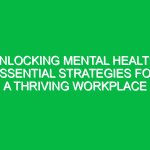# Lifting and Rigging: Essential HSE Tips for a Safe Workplace
Welcome, team! Today, we’re going to discuss a crucial topic that plays a significant role in ensuring the safety of our workplace – Lifting and Rigging. This Toolbox Talk aims to provide you with essential tips and guidelines to promote a safe working environment while performing lifting and rigging activities.
## Understanding Lifting and Rigging
Lifting and rigging are integral aspects of many industrial operations, including construction, manufacturing, and maintenance. It involves the use of equipment such as cranes, hoists, slings, and ropes to lift and move heavy loads. Proper lifting and rigging practices are essential to prevent accidents, injuries, and damage to property.
## Importance of Lifting and Rigging in HSE
Effective lifting and rigging practices are critical for maintaining a safe workplace environment. By following proper procedures and guidelines, we can significantly reduce the risk of accidents and ensure the well-being of all employees. Adhering to HSE standards when performing lifting and rigging operations is not just a legal requirement but also a moral obligation to protect everyone on site.
## Best Practices for Safe Lifting and Rigging
### 1. Equipment Inspection
Before using any lifting or rigging equipment, always conduct a thorough inspection to ensure it is in good working condition. Check for any signs of wear and tear, damage, or defects that could compromise safety. Never use faulty equipment.
### 2. Proper Training
Ensure that all employees involved in lifting and rigging operations receive adequate training on the safe use of equipment, proper lifting techniques, and HSE guidelines. Proper training can significantly reduce the risk of accidents and injuries.
### 3. Weight Limits
Always know the weight limits of the equipment you are using and never exceed them. Overloading equipment can lead to structural failure, causing accidents and injuries. Follow manufacturer’s guidelines and recommendations for safe working loads.
### 4. Secure Loads
Ensure that loads are properly secured and balanced before lifting. Use appropriate slings, hooks, and attachments to prevent shifting during lifting. Failure to secure loads properly can result in accidents and damage.
### 5. Communication
Effective communication is essential during lifting and rigging operations. Establish clear signals and communication methods between team members to ensure everyone is on the same page. Miscommunication can lead to accidents and injuries.
### 6. Personal Protective Equipment (PPE)
Always wear the necessary PPE, such as gloves, helmets, safety glasses, and steel-toed boots, when performing lifting and rigging tasks. PPE can provide an additional layer of protection in case of accidents.
## Potential Hazards and Risks
When it comes to lifting and rigging, there are several potential hazards and risks that we need to be aware of:
– **Overloading**: Exceeding the weight limits of equipment.
– **Slip and Trip Hazards**: Uneven surfaces or cluttered work areas.
– **Equipment Failure**: Faulty equipment or improper maintenance.
– **Poor Communication**: Misunderstandings leading to accidents.
– **Improper Training**: Lack of knowledge on safe lifting practices.
## Regulations and Standards
It’s essential to comply with relevant regulations, standards, and company policies related to lifting and rigging. By following these guidelines, we not only ensure the safety of our employees but also meet legal obligations. Non-compliance can result in fines, penalties, and, most importantly, accidents.
## Conclusion
In conclusion, practicing safe lifting and rigging techniques is crucial for maintaining a safe workplace environment. By following the tips and guidelines discussed in this Toolbox Talk, we can minimize the risk of accidents, injuries, and property damage. Remember, safety is everyone’s responsibility, and each one of us plays a vital role in ensuring a safe working environment.
Thank you for your attention and commitment to safety. Let’s work together to make our workplace a safer place for everyone! Stay safe, team!
Remember, when it comes to lifting and rigging, safety always comes first. Let’s prioritize HSE in everything we do. Thank you for your attention, and let’s continue to work safely together.


